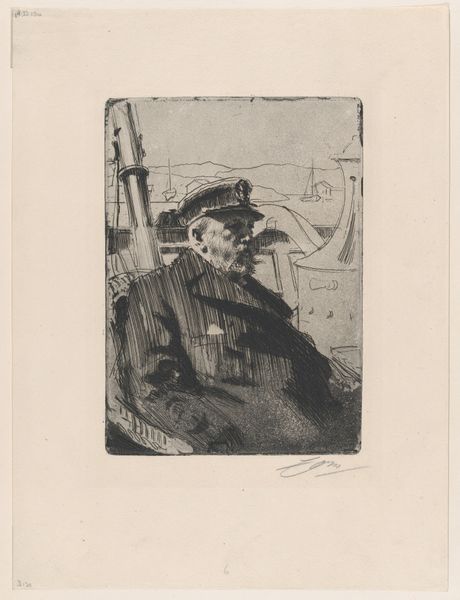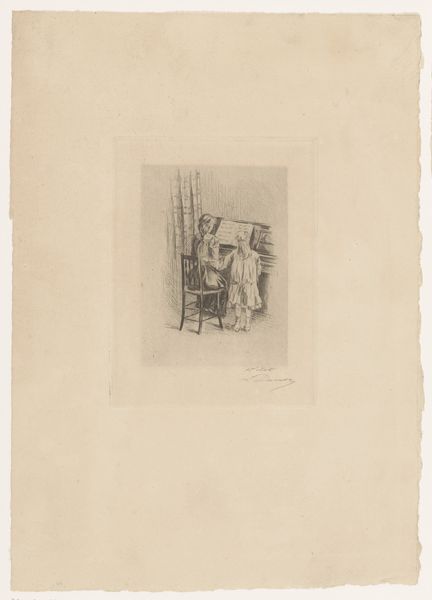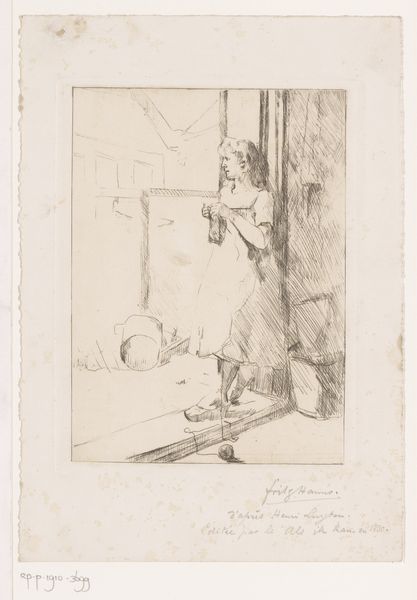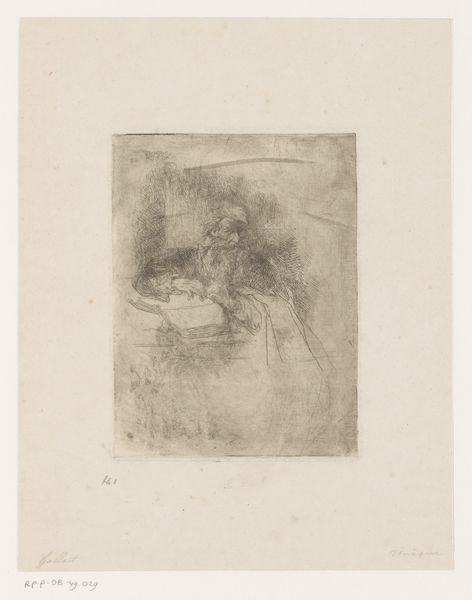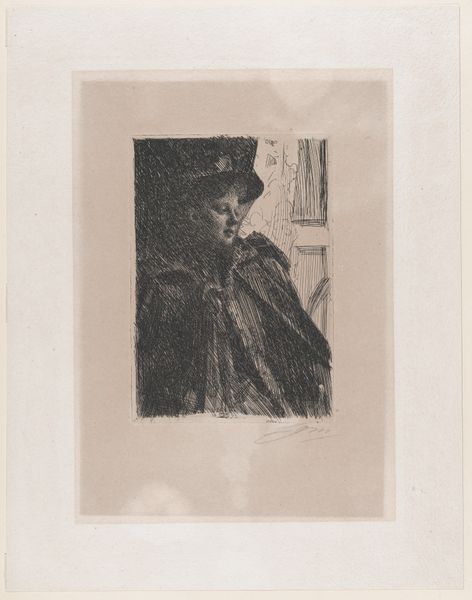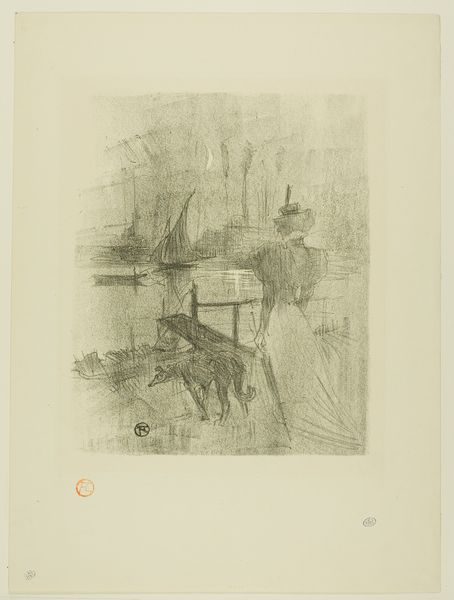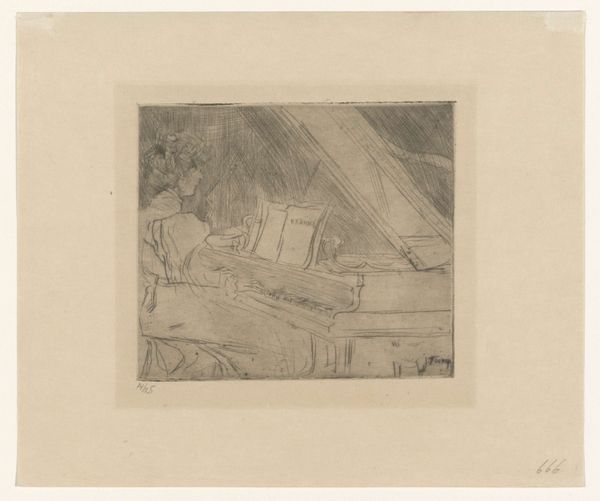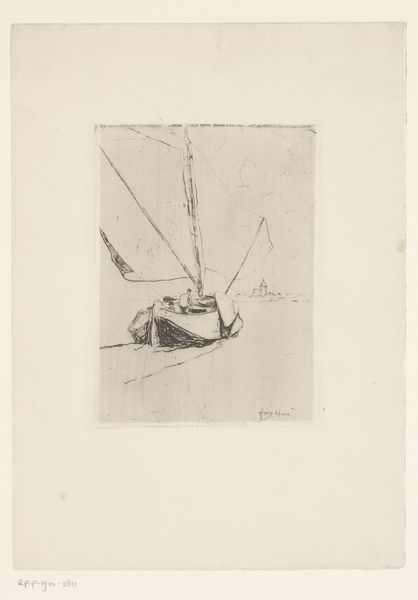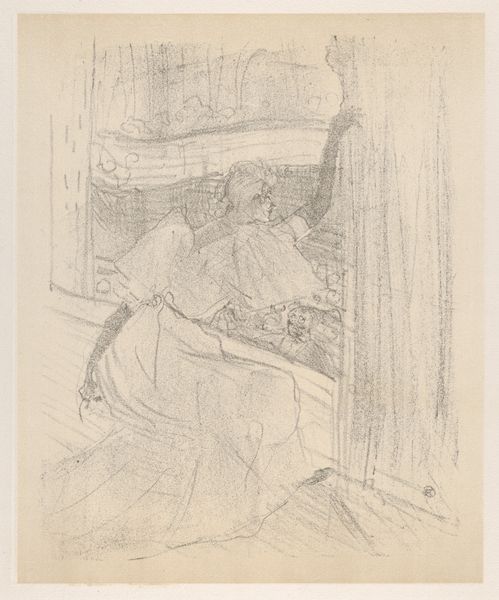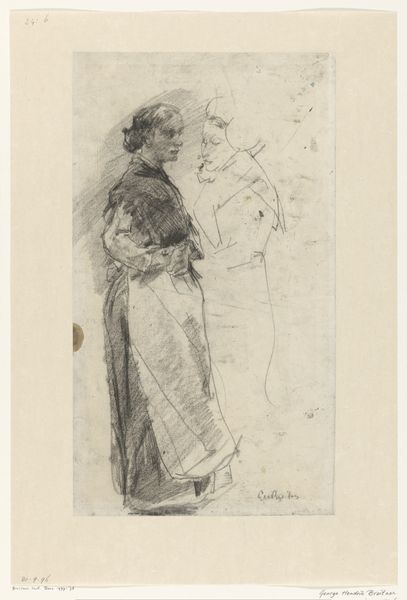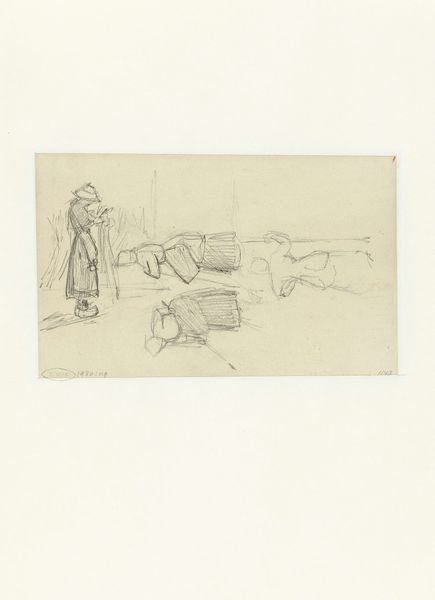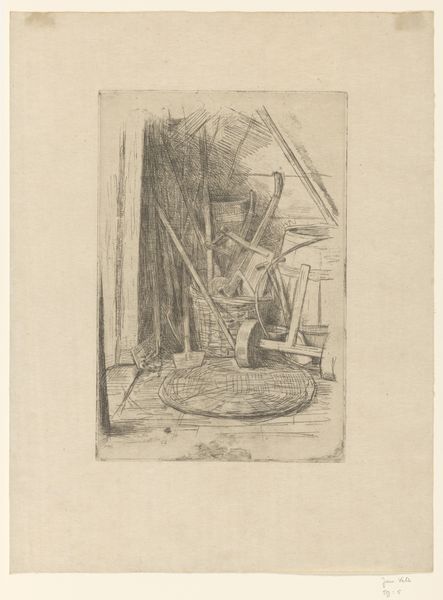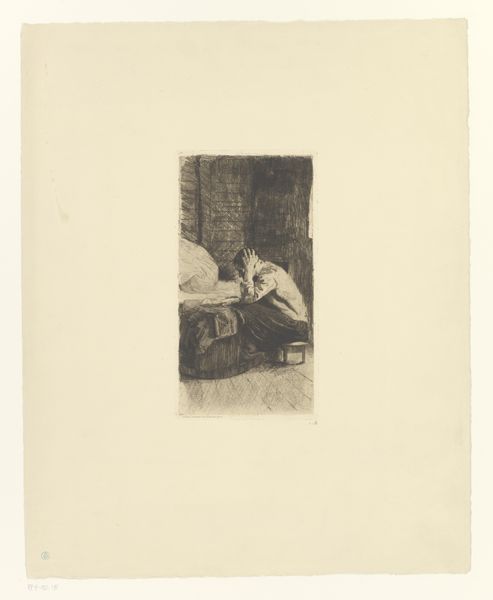
lithograph, print, etching
#
portrait
#
lithograph
# print
#
etching
#
genre-painting
Dimensions: height 270 mm, width 248 mm
Copyright: Rijks Museum: Open Domain
Curator: At first glance, the lithograph whispers more than it shouts, doesn't it? The pale, muted tones...almost ghostly. Editor: Yes, exactly. I see that subdued palette, almost monochrome, creating a feeling of quiet contemplation, almost solitude. But who created it, and when? Curator: The piece is called "De prentliefhebber," or "The Print Lover," crafted by Armand Rassenfosse in 1924, using lithography and etching. Note the figure immersed in examining a print. Editor: Fascinating. Given the title, what do you think it suggests about the act of art appreciation in the early 20th century, considering how cultural institutions operated? Curator: The gentleman with his hat here, framed by the window light, invites us to consider print collecting as a private, intellectual endeavor. Think of prints as democratic artistic expression—art for the people at a time when public museums were shaping cultural taste. He seems lost in the details. It’s also striking how little context we get from his environment: the chair, the rail, the light all focus attention on the subject. Editor: Precisely. The minimal background directs our gaze toward the man and the print he is viewing, amplifying the intensity of his focus. What draws me in further are the stylistic choices—Rassenfosse's linework seems deliberately fragile and tentative. How do these marks, captured using printmaking, resonate across history? Curator: The artist, Rassenfosse, has chosen soft, subtle hatching and delicate strokes. Etching lines trace both inner and outer realities, as though the subject's intellectual passion subtly overlays the depiction. Notice how it affects the perceived emotion? The visible process lends the image immediacy. These kinds of impressions create connections with artists from past eras who used this technique—echoes that can span centuries! Editor: A legacy built upon a singular artistic moment. The image then invites the contemporary viewer to consider print collecting and individual contemplation. What stays with me is the way that quiet engagement becomes a statement, almost radical, in our age of relentless spectacle. Curator: Yes, the subtle layering of tones and lines speaks to the layers within both art and our appreciation of it, and hopefully entices our audience to reflect on their relationship to collecting and quiet observation.
Comments
No comments
Be the first to comment and join the conversation on the ultimate creative platform.
